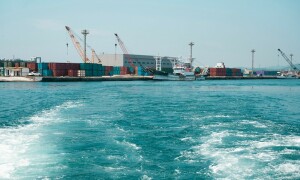GENEVA: The United Nations suggested Monday that the world’s poorest nations could benefit far more from carbon offset projects, supporting their development while contributing to global climate action.
A report from the UN trade and development agency UNCTAD highlighted the potential of carbon markets — which enable corporations and countries to offset their greenhouse gas emissions through climate change-battling projects abroad — to catalyse capital flows to developing countries and help boost sustainable development.
But it warned that the 45 so-called least developed countries, or LDCs, were facing significant barriers in accessing global carbon markets due to their smaller economies and difficulties in attracting foreign investment.
“There is an untapped potential in the LDCs,” UNCTAD chief Rebeca Grynspan told reporters.
Highlighting that the world’s poorest countries are being hard-hit by climate disasters they played little role in creating, and with few resources to address them, she called for carbon markets to be “more effectively leveraged to support (their) sustainable development and economic growth”.
She described the carbon markets as a “beacon of hope”, and “as enablers of climate ambition and catalysts of capital flows towards developing countries, offering a promising pathway to unlock sustainable development”.
UNCTAD stressed that LDCs should be well-positioned for generating carbon credits in sectors like forestry, agriculture and renewable energy, but were struggling to access complex and fragmented carbon markets and facing prohibitively low prices.
Each credit sold on the global carbon markets represent the reduction or removal of one tonne of carbon dioxide (CO2).
The markets were set up to help meet the goals of the 2015 Paris Agreement to cap global warming at “well below” two degrees Celsius above average levels measured between 1850 and 1900 — and 1.5C if possible.
The LDCs hold the potential to set up projects that could equal about 70 percent of CO2 emissions from the global aviation industry in 2019, or about two percent of global emissions, according to Monday’s report.
But so far, these countries “are utilising only two percent of their current potential”, said Grynspan.
A crucial factor for LDCs, she said, was establishing “a viable carbon price” — something UNCTAD has determined should be around $100 per tonne of CO2. Grynspan warned that if the price instead remains at its current level of around $10, “we think that 97 percent of the ... potential of the LDCs contributing to mitigate climate change will remain untapped until 2050”.























Comments
Comments are closed.